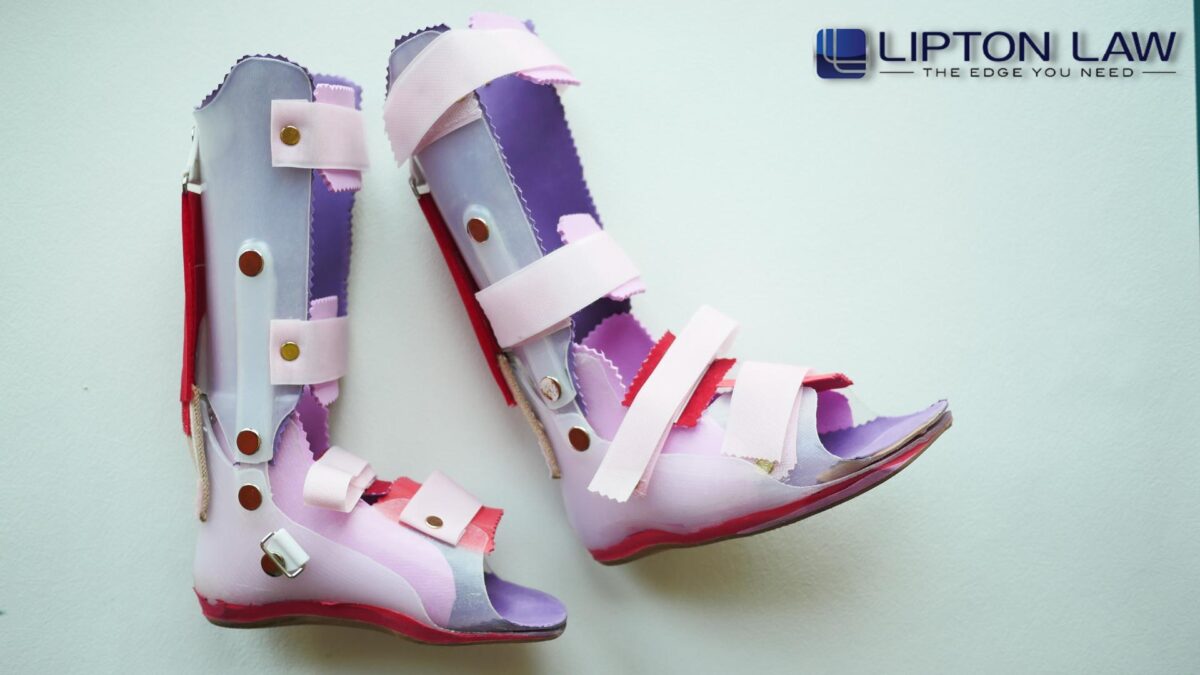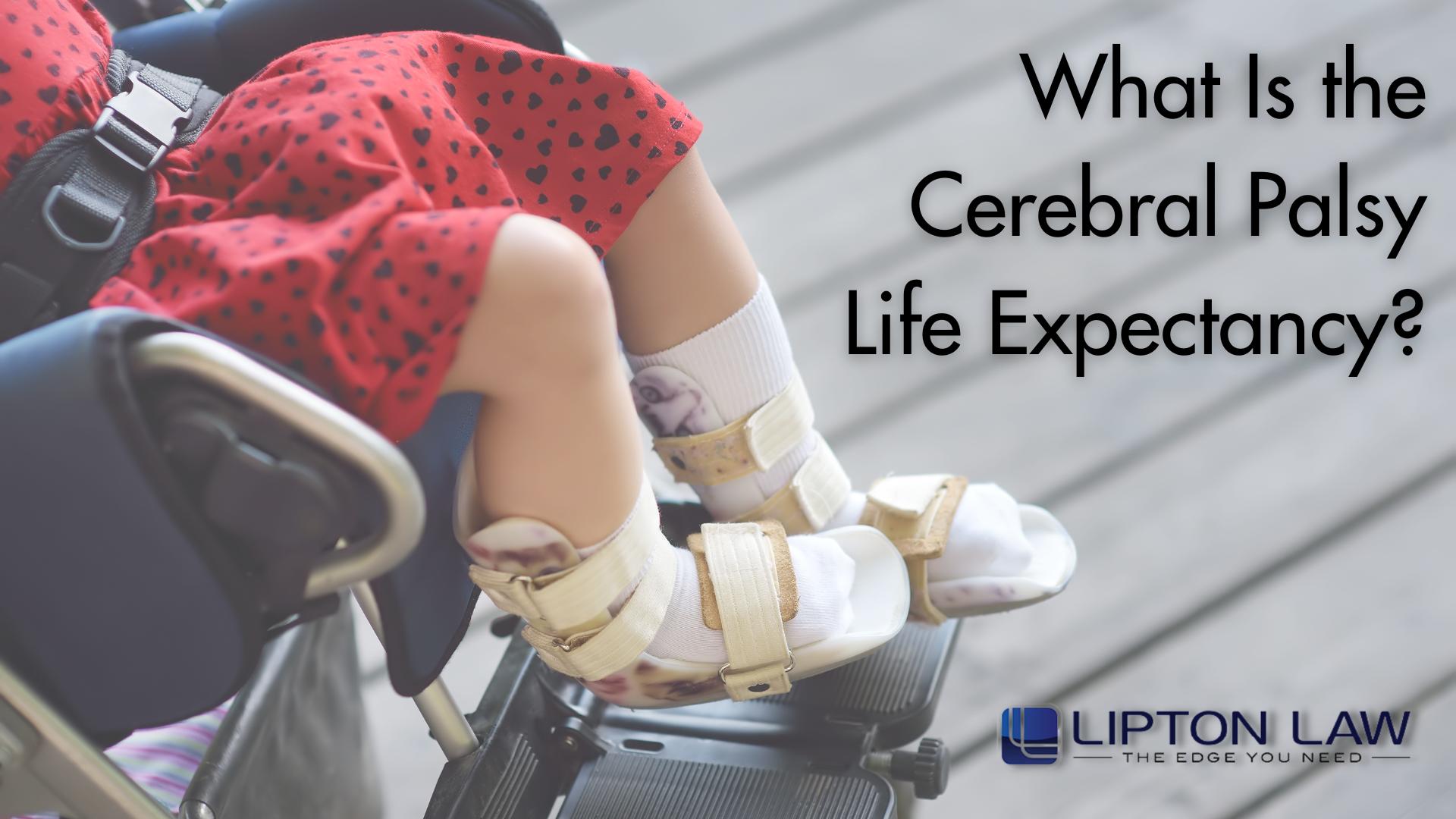When a child is born with cerebral palsy caused by negligence, the responsible medical professional should be held accountable for limiting that child’s life span. At Lipton Law, the Southfield cerebral palsy attorneys understand this and will fiercely fight for you and your child. Families living with a child diagnosed with cerebral palsy have a long, expensive road ahead, which is why your medical malpractice attorney will do everything possible to recover maximum compensation to help ease the emotional and financial stress.
In our latest blog post, the Southfield cerebral palsy attorneys explain how this medical condition can impact a child’s life expectancy and your legal rights regarding a medical negligence case.
What Is Cerebral Palsy?
Cerebral palsy is a group of conditions considered one of the more severe types of birth injuries. The term “cerebral” pertains to the brain, while “palsy” refers to issues or weakness within the muscles.
This medical condition occurs during birth when the infant doesn’t receive enough oxygen or blood flow to the brain, also known as hypoxic-ischemic encephalopathy. Cerebral palsy primarily affects balance, movement, muscle tone, and posture. The severity of the child’s cerebral palsy can vary depending on how long the infant lacked blood flow or oxygen to the brain.
How Can Cerebral Palsy Affect a Person’s Quality of Life and Longevity?
All cerebral palsy cases are different based on the severity of the child’s condition. Some children with cerebral palsy may have minor impairments, while more serious cases can involve severe motor impairment with a child confined to a wheelchair. In addition to mobility problems, children with cerebral palsy may also suffer from vision and hearing impairment, seizures, and difficulty speaking.
Depending on the severity of the cerebral palsy diagnosis, some children can face more hardships than others. Those with more serious cerebral palsy cases can be at a greater risk of developing serious medical conditions leading to life-threatening complications. Since cerebral palsy affects mobility, some patients can suffer from poor cardiovascular and muscular health.
The most important factor that can increase a patient with cerebral palsy’s life expectancy is ensuring they receive proper medical care and treatments.
Does Cerebral Palsy Get Worse With Age?
Cerebral palsy does not worsen over time. Even though the condition is non-progressive, the child’s medical condition will not improve. There is currently no cure for cerebral palsy.
Average Child’s Life Expectancy for Cerebral Palsy
Many factors can affect a child’s life expectancy when living with cerebral palsy. The severity of their medical condition and other factors all affect their life span.
Life Expectancy Based on Severity
Below, we will explain the differences between the average life expectancy of mild and severe cerebral palsy patients.
Mild Cerebral Palsy
Children with mild cerebral palsy often have a similar life expectancy to those without the medical condition. According to research published by Dr. Anaynya Mandal, a two-year-old child with mild cerebral palsy has a 99% chance of living to 20. Dr. Mandal further states that individuals with mild cerebral palsy have an 80% chance of living to 58 years or older. Other studies have shown that patients with mild cerebral palsy are expected to have the same life expectancy as the general population, around 76 years.
Severe Cerebral Palsy
Since patients with more severe forms of cerebral palsy experience more serious side effects than those with milder cases, their life expectancy is lower. Individuals with severe cerebral palsy suffer from significant cognitive and mobility limitations, decreasing their life span to around 20 years old. However, BCM Neurology states that the mortality rate of children with severe forms of cerebral palsy has greatly reduced since 1990.
What Factors Affect the Life of Someone With Cerebral Palsy?

Children with cerebral palsy endure both mobility and intellectual impairments. However, other factors affect the child’s life expectancy and quality of life. The severity of these conditions will vary based on the cerebral palsy diagnosis.
Mobility Issues
Different forms of cerebral palsy can affect a child’s mobility differently. The most common type of cerebral palsy and their mobility side effects are listed below.
- Spastic Cerebral Palsy: This form of CP is the most common and can lead to difficulty walking, stiffness and tightness in muscles or joints, and problems with reflexes.
- Athetoid Cerebral Palsy: Also known as Non-Spastic Cerebral Palsy, children with this form of CP may have difficulty standing up straight, have trouble eating, experience “floppy” limbs, and have a stiff or rigid body.
- Ataxic Cerebral Palsy: Children living with this form of cerebral palsy can experience difficulty with coordination and balance. Ataxic CP can also cause vision problems, tremors, trouble speaking, and cause the child to walk with their feet wide.
- Mixed Cerebral Palsy: This form of cerebral palsy is caused by numerous brain injuries. Since Mixed CP affects different areas of the brain, a child with this type of CP can experience a variety of impairments.
Intellectual Impairment
Some children with cerebral palsy can suffer from severe cognitive impairment depending on their form of CP. Those impairments will vary depending on the areas of the brain affected. Speech and language difficulties are common signs of a patient suffering from cognitive issues.
Cerebral palsy patients with intellectual impairments can struggle to express their emotions, desires, and needs. Often, occupational therapy can help those with cognitive problems learn to communicate effectively.
Visual or Hearing Impairment
Vision and hearing impairments can also affect children with cerebral palsy. Some children may become blind or deaf, requiring special accommodations.
Nutrition Issues
Some forms of cerebral palsy can cause children to struggle with swallowing and eating. Cerebral palsy patients who have these impairments are at risk of becoming malnourished and dehydrated.
Musculoskeletal and Respiratory Impairment
Musculoskeletal disorders like scoliosis, hip dysplasia, patella alta, and cervical stenosis can cause cerebral palsy patients to experience additional difficulty with mobility and movements.
Respiratory illnesses like bronchopulmonary dysplasia (BPD) often affect babies who are born prematurely. Other disorders like chronic aspiration of food and saliva can also cause difficulty breathing.
Epilepsy Issues
Almost half of the children born with cerebral palsy experience seizures. Since seizures are unpredictable, this impairment can create additional risks regarding the child’s well-being.
Is Cerebral Palsy Fatal?
Cerebral palsy alone is not fatal, but the additional impairments like those listed above can lead to a lower life expectancy in patients with CP. Problems with mobility, breathing, and eating can contribute to the overall health and well-being of a child living with cerebral palsy. Other serious medical conditions, like epilepsy, can also put patients at risk of a lower life span.
What Is the Most Common Cause of Death in Patients With Cerebral Palsy?
Respiratory illness is the most common cause of death among people with cerebral palsy. Adults and children with cerebral palsy are at an increased risk of developing pneumonia and suffering from respiratory failure and aspiration. Other causes of death in cerebral palsy patients are organ failure and cardiovascular problems.
How to Improve Quality of Life and Lifespan for Cerebral Palsy Patients
Families who have a child with cerebral palsy can improve their quality of life and increase their lifespan. Children diagnosed with cerebral palsy can lead happy, healthy lives with proper medical care. The key to helping your child overcome the difficulties of living with cerebral palsy is understanding how it affects them and developing a specialized treatment plan. Some common ways that treatments can help a patient’s quality of life and life expectancy are:
- Learning ways to manage seizures
- Developing ways to cope with emotional stress
- Improving mobility and coordination
- Learning pain management
- Developing some independence with daily care and maintenance, like eating, bathing, and dressing
- Joining legal, government, and community support programs
- Improving communication and social skills
Did Your Child Suffer Cerebral Palsy Due to Medical Negligence?

While cerebral palsy is a birth injury, it’s not always the result of medical negligence. However, if you believe that your child’s cerebral palsy diagnosis was due to negligence on behalf of your doctor or the medical staff, you could have a medical malpractice claim.
Families with a child with cerebral palsy can expect to pay around $921,000 in indirect medical costs, direct medical costs, and direct non-medical costs, according to the CDC’s Morbidity and Mortality Weekly Report (MMWR). That monetary figure does not account for the parents’ lost wages, over-the-counter medications, emergency room visits, caregiver expenses, and more. If you factor in those costs, the amount of money families must pay when caring for their child with cerebral palsy is insurmountable.
When your child has been diagnosed with cerebral palsy caused by medical negligence, the Southfield cerebral palsy attorneys from Lipton Law are ready to help. As mentioned above, the expenses related to caring for your child with CP are extensive, and when negligence leads to their medical condition, those responsible should pay.
Contact a Michigan Birth Injury Attorney at Lipton Law
At Lipton Law, our compassionate attorneys understand the delicacy of pursuing legal action against the medical staff responsible for causing your child’s birth injury. When you choose our law firm, you can rest assured that our legal team will do everything possible to ensure the medical professionals responsible are held accountable.
The Southfield medical malpractice attorneys at Lipton Law have represented clients throughout Michigan in many medical negligence cases. These lawsuits can be extremely complex and difficult to prove, but our results speak for themselves. When you’re looking to recover compensation for your child’s birth injury, trust the highly experienced attorneys from Lipton Law.
To schedule a free consultation with one of our Southfield birth injury attorneys, call (248) 557-1688 today.

